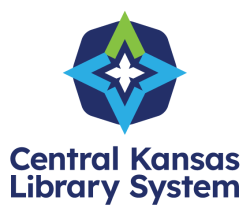Treating Nicotine Dependence with Nitrous Oxide/Oxygen (PAN): A Manual for Health Professionals
(eBook)
Description
Loading Description...
Also in this Series
Checking series information...
More Details
Format
eBook
Language
English
ISBN
9781624885204
Reviews from GoodReads
Loading GoodReads Reviews.
Citations
APA Citation, 7th Edition (style guide)
Prof. Mark Gillman., & Prof. Mark Gillman|AUTHOR. (2012). Treating Nicotine Dependence with Nitrous Oxide/Oxygen (PAN): A Manual for Health Professionals . BookBaby.
Chicago / Turabian - Author Date Citation, 17th Edition (style guide)Prof. Mark Gillman and Prof. Mark Gillman|AUTHOR. 2012. Treating Nicotine Dependence With Nitrous Oxide/Oxygen (PAN): A Manual for Health Professionals. BookBaby.
Chicago / Turabian - Humanities (Notes and Bibliography) Citation, 17th Edition (style guide)Prof. Mark Gillman and Prof. Mark Gillman|AUTHOR. Treating Nicotine Dependence With Nitrous Oxide/Oxygen (PAN): A Manual for Health Professionals BookBaby, 2012.
MLA Citation, 9th Edition (style guide)Prof. Mark Gillman, and Prof. Mark Gillman|AUTHOR. Treating Nicotine Dependence With Nitrous Oxide/Oxygen (PAN): A Manual for Health Professionals BookBaby, 2012.
Note! Citations contain only title, author, edition, publisher, and year published. Citations should be used as a guideline and should be double checked for accuracy. Citation formats are based on standards as of August 2021.
Staff View
Grouping Information
| Grouped Work ID | 524fb57b-3fb7-3583-796f-4b2956a64baa-eng |
|---|---|
| Full title | treating nicotine dependence with nitrous oxide oxygen pan a manual for health professionals |
| Author | gillman prof mark |
| Grouping Category | book |
| Last Update | 2023-04-11 20:03:56PM |
| Last Indexed | 2024-04-20 00:57:27AM |
Hoopla Extract Information
stdClass Object
(
[year] => 2012
[artist] => Prof. Mark Gillman
[fiction] =>
[coverImageUrl] => https://cover.hoopladigital.com/vsa_9781624885204_270.jpeg
[titleId] => 11742464
[isbn] => 9781624885204
[abridged] =>
[language] => ENGLISH
[profanity] =>
[title] => Treating Nicotine Dependence with Nitrous Oxide/Oxygen (PAN)
[demo] =>
[segments] => Array
(
)
[children] =>
[artists] => Array
(
[0] => stdClass Object
(
[name] => Prof. Mark Gillman
[artistFormal] => Gillman, Prof. Mark
[relationship] => AUTHOR
)
)
[genres] => Array
(
[0] => Clinical Medicine
[1] => Medical
)
[price] => 1.29
[id] => 11742464
[edited] =>
[kind] => EBOOK
[active] => 1
[upc] =>
[synopsis] => The need for this book was prompted by the wider understanding and recognition of the dangers of using tobacco products and the success by those of who have been treating substance abuse withdrawal with nitrous oxide/oxygen (also called PAN). Indeed, some trained physicians have been using nitrous oxide/oxygen sedation since the mid-1980's to treat substance dependence including nicotine dependence. Because the technique is so safe and simple, once a short hands-on training course has been received, it lends itself to a much wider use by almost all trained health professionals. The use of PAN for treating nicotine dependence is ideally suited for primary health care, because unlike some other severe withdrawal states, which on occasion, can have severe acute sequelae, tobacco addiction does not present with severe acute withdrawal sequelae. It therefore can be safely used on almost all patients as outpatients. Furthermore, since suitably trained nursing sisters are allowed to administer nitrous oxide at non-anaesthetic doses, they too can assist patients to quit the use of tobacco. It thus gives the health practitioner (doctor, dentist, and registered nurse) an easily applied method of helping their patients to quit. PAN (psychotropic analgesic nitrous) sedation is an approved treatment in South Africa and qualifies for medical insurance refunds. Assisting their patients to stop smoking or using tobacco products may be one of the most important contributions by health professionals to their patients' health. Fortunately, there is some evidence that advice from health professionals about tobacco use and its dangers plus assistance with quitting has an important influence on patients' decision to quit. Chapter 1 - Chapter one gives a general introduction to the topic of nicotine dependence and its aetiological relationship to diseases as well as an outline of the topics covered in the succeeding chapters. Chapter 2 - This chapter gives a general outline of the epidemiology and incidence of the various systemic diseases associated with tobacco use (including the impact of secondhand smoke). Knowledge of these conditions, many of which are potentially fatal, is essential in order for the practitioner to give well-founded and appropriate advice to patients on the advisability of quitting. Chapter 3 - This chapter covers, in some detail, the negative effects of tobacco on oral health, ranging from the trivial e.g. tooth staining to life threatening e.g. cancer. I have dealt with this aspect so that the manual will have some interest to dentists, who might wish to assist their patients to quit, since many dentists already have the expertise to apply nitrous oxide at the low doses consistent with PAN. Chapter 4 - Here I deal with the general topic of substance abuse and dependence. This chapter will discuss substance abuse and dependence by looking at the terminology and underlying principles of substance dependence and abuse. This will be discussed using a historical perspective to enable practitioners to have a full understanding of the development of modern concepts. Chapter 5 - Chapter 5 looks at the neurobiology of substance dependence, including some simple neurotransmitter concepts, which gives a rational basis for understanding the use of PAN for treating nicotine dependence. It will also explain the reasons why, today, the terminology and definitions are still the source of debate. Chapter 6 - Chapter 6 gives a theoretical basis of the general principles and practical technique of using PAN and then focuses on its use for treating nicotine dependence. Chapter 7 - The final chapter of the manual will discuss a schedule, detailing how to treat nicotine dependence, including the use of other adjunctive therapies (e.g. nicotine replacement) with PAN. Some basic psychological aspects of nicotine dependence are also discussed in this chapter.
[url] => https://www.hoopladigital.com/title/11742464
[pa] =>
[subtitle] => A Manual for Health Professionals
[publisher] => BookBaby
[purchaseModel] => INSTANT
)

